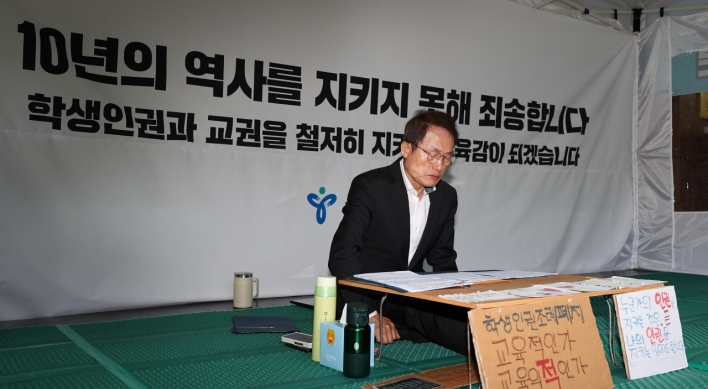The problem of multilateral trade negotiations is that, increasingly, negotiators are confined to the mandates and directives of their governments, with little leeway at the negotiating table. That is just natural: What they say will be transcribed into official documents and what they agree to will be put into treaty texts which will remain legally binding until terminated. Under these circumstances, everything said and delivered should be tightly controlled.
 To the contrary, a forum designed to discuss without producing any legally binding document or expecting any quid pro quo can facilitate more candid assessments and exchanges of views. That is exactly what the Asia-Pacific Economic Cooperation is all about. And it has worked.
To the contrary, a forum designed to discuss without producing any legally binding document or expecting any quid pro quo can facilitate more candid assessments and exchanges of views. That is exactly what the Asia-Pacific Economic Cooperation is all about. And it has worked.
The 21-member cooperative/consultative body has been dubbed “an incubator of innovative ideas.” Flexible approaches and creative suggestions have been a hallmark of the APEC since its creation in 1989. These approaches and suggestions have then been transferred to a more rigid forum of multilateral negotiations, shifting the pendulum of global trade landscape one way or another.
After all, this is an entity whose collective economies account for 57 percent of the global GDP and 48 percent of the global trade.
It is Bali, Indonesia, that hosts this year’s 21st APEC Summit Meeting from Oct. 6-8 amid mounting global attention, under the theme of “Resilient Asia-Pacific: Engine of Global Growth.” The term “resilient” is said to have been chosen to signify the relatively stable performance of the APEC economies in the tailwinds of the global economic crisis.
In terms of trade, this year’s APEC meeting is taking place at the most crucial juncture in the APEC’s history since its adoption of Bogor Goals of 1994. It will be a precursor of what is coming up in the same place just two months later: the Ninth Ministerial Conference (MC9) of the WTO from Dec. 3 to 6. The MC9 in December will take up three core issues left on the table: trade facilitation, agriculture and least-developed countries packages. The outcome of the MC9 will then be used as a crucial barometer to assess the current state of play of the multilateral trading system embodied in the WTO and the possibility to re-galvanize it.
As all APEC economies are also members of the WTO taking up a significant portion of global trade, a message from the leaders next week in Bali may well affect, either positively or negatively, how the other 138 members will react in the run-up to the December meeting. Next week’s meeting is a critical way station to revive the momentum to reach a deal on the multilateral front at long last. If, on the other hand, the APEC ends up paying only lip service to a multilateral trading regime and establishing mega-regional trade agreements of its own, the breakthrough in December would become that much more difficult to attain.
In a sense, the December MC9 in Bali is a “road show” for a multilateral trading regime. Potential investors ― countries and governments ― will be all ears to check the long-term viability of the company while they check the prospects of another competing company of regional trade agreements. What the APEC members may say and choose at this juncture as opinion leaders in the market stand to affect other potential investors substantially.
The APEC should certainly take pride in its members’ “resilience” for stable economic performance despite the continuing economic downturn. The more critical and important “resilience” that the APEC can show is the “resilience” for the support and success of the multilateralism that has framed the world we live in since 1947. The Bogor Goals of 1994 have set the tone for global trade and investment landscapes. Hopefully, 2013 will add another milestone to APEC’s achievements.
By Lee Jae-min
Lee Jae-min is a professor of law at the School of Law at Hanyang University. Formerly he practiced law as an associate attorney with Willkie Farr & Gallagher LLP. ― Ed.
 To the contrary, a forum designed to discuss without producing any legally binding document or expecting any quid pro quo can facilitate more candid assessments and exchanges of views. That is exactly what the Asia-Pacific Economic Cooperation is all about. And it has worked.
To the contrary, a forum designed to discuss without producing any legally binding document or expecting any quid pro quo can facilitate more candid assessments and exchanges of views. That is exactly what the Asia-Pacific Economic Cooperation is all about. And it has worked. The 21-member cooperative/consultative body has been dubbed “an incubator of innovative ideas.” Flexible approaches and creative suggestions have been a hallmark of the APEC since its creation in 1989. These approaches and suggestions have then been transferred to a more rigid forum of multilateral negotiations, shifting the pendulum of global trade landscape one way or another.
After all, this is an entity whose collective economies account for 57 percent of the global GDP and 48 percent of the global trade.
It is Bali, Indonesia, that hosts this year’s 21st APEC Summit Meeting from Oct. 6-8 amid mounting global attention, under the theme of “Resilient Asia-Pacific: Engine of Global Growth.” The term “resilient” is said to have been chosen to signify the relatively stable performance of the APEC economies in the tailwinds of the global economic crisis.
In terms of trade, this year’s APEC meeting is taking place at the most crucial juncture in the APEC’s history since its adoption of Bogor Goals of 1994. It will be a precursor of what is coming up in the same place just two months later: the Ninth Ministerial Conference (MC9) of the WTO from Dec. 3 to 6. The MC9 in December will take up three core issues left on the table: trade facilitation, agriculture and least-developed countries packages. The outcome of the MC9 will then be used as a crucial barometer to assess the current state of play of the multilateral trading system embodied in the WTO and the possibility to re-galvanize it.
As all APEC economies are also members of the WTO taking up a significant portion of global trade, a message from the leaders next week in Bali may well affect, either positively or negatively, how the other 138 members will react in the run-up to the December meeting. Next week’s meeting is a critical way station to revive the momentum to reach a deal on the multilateral front at long last. If, on the other hand, the APEC ends up paying only lip service to a multilateral trading regime and establishing mega-regional trade agreements of its own, the breakthrough in December would become that much more difficult to attain.
In a sense, the December MC9 in Bali is a “road show” for a multilateral trading regime. Potential investors ― countries and governments ― will be all ears to check the long-term viability of the company while they check the prospects of another competing company of regional trade agreements. What the APEC members may say and choose at this juncture as opinion leaders in the market stand to affect other potential investors substantially.
The APEC should certainly take pride in its members’ “resilience” for stable economic performance despite the continuing economic downturn. The more critical and important “resilience” that the APEC can show is the “resilience” for the support and success of the multilateralism that has framed the world we live in since 1947. The Bogor Goals of 1994 have set the tone for global trade and investment landscapes. Hopefully, 2013 will add another milestone to APEC’s achievements.
By Lee Jae-min
Lee Jae-min is a professor of law at the School of Law at Hanyang University. Formerly he practiced law as an associate attorney with Willkie Farr & Gallagher LLP. ― Ed.




![[KH Explains] No more 'Michael' at Kakao Games](http://res.heraldm.com/phpwas/restmb_idxmake.php?idx=644&simg=/content/image/2024/04/28/20240428050183_0.jpg&u=20240428180321)












![[Herald Interview] Mistakes turn into blessings in street performance, director says](http://res.heraldm.com/phpwas/restmb_idxmake.php?idx=652&simg=/content/image/2024/04/28/20240428050150_0.jpg&u=20240428174656)
